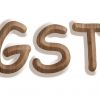
Who governs and manages the GST Act - A complete overview of the framework
The framework of the GST (Goods and Services Tax) regime is efficient and robust as it has simplified the previous tax regime by removing 17 indirect taxes. There's a complete change in the tax slabs for different goods and services, which keep on changing depending on the revisions and feedback from suppliers and experts. GST council members are responsible for this change and other essential decisions. The council members include the central union finance minister, who is the chairman of the council, and state union ministers. State ministers have a say in the decision-making process, depending on the requirements and needs of a particular state. Like, the SGST that levies in the state of Maharashtra majorly depends on the feedback from their minsters who are council members. There is a separate portal for Maharashtra GST. Information All about mahagst is available through the portal www.mahagst.gov.in, and regular updates are accessible through this portal.
GST council
GST council is a 33 member body appointed by the government to formulate the rules and regulations of Goods and services tax regime. The Union finance minister of the country is designated as the chairman of the council, and at the time of writing, it is Mrs. Nirmala Sitharaman. The other members that form the committee are the union ministers of the states who are in charge of revenue in their respective states and one member each from the union territories who are ministers of finance. Ministers of the state elect the vice-chairman of the council, and the secretary of revenue works as the appointed secretary of the GST council.
So far, the GST council has chaired 38 meetings in the head office located in the capital city New Delhi through video call and in-person according to the availability of the members. Every decision about the rules and regulations of Goods and Services needs to be taken in a meeting with a majority no less than three-fourths of the weighted votes of all the members present. Voting should be in accordance with set principles that are:
- The vote from the central government shall have a weightage of about one-third of the total votes that are cast.
- All the votes of the State Governments combined shall have a weightage of two-thirds of the total votes that are cast in a particular meeting.
This is a mandatory rule for any GST council meeting because it aims to evolve through the process of inclusive consultation and to establish the highest quality of co-operative federalism.
The GST council is responsible for every decision related to the Goods and Services Tax system. It is responsible for changes in the surcharges, cess, taxes the center and state government levies on companies and individual taxpayers. It is responsible for the exemption of Goods and services according to the need that may arise depending on different situations. It governs various schemes and mechanisms like the Input Tax Credit scheme and the reverse charge mechanism. It decides the special rates to levy in the face of adverse situations such as natural calamity. It is responsible for setting the threshold limit on the maximum turnover of a business under which a company could avail benefits and get exemption on some taxes and all other issues relating to the GST regime.
GST Framework
GST subsumed several taxes to bring it under one umbrella, which creates one nation - one tax formula a reality. There are three parts to GST. The CGST ( Central Goods and Services Tax), SGST ( State Goods and Services Tax), and IGST ( Integrated Goods and Services Tax). There is also UTGST ( Union Territory Goods and Services Tax) that is very similar to SGST.
CGST: CGST is a tax that levies on different goods and services by the central government, and the collection of taxes remits to the central government. The tax rate on various products and services is the same as the SGST. Supply of Goods and Services on intra-state level come under CGST.
SGST: SGST is the tax that levies on goods and services by the state government and the collection through this tax remit to the state government. It is the same as CGST, where the Supply of services and goods on an intra-state level come under SGST.
IGST: Any supply of Goods or services on inter-state level attracts Integrated Goods and Services Tax. This tax is collected by the central government and distributed to the states by agreement between central and state governments.
There are five different tax rates under the Goods and Services Tax Regime that covers all the goods and services except petroleum products such as high-speed diesel, crude petroleum, aviation turbine fuel, natural gas, etc. The five tax slabs are 0.25 - 3%, 5%, 12%, 18% and 28%.
Goods that are deemed essential for every household are exempted from levy of any taxes for the socio-economic reasons and also because necessary products and services are available to citizens of all classes rich and poor without making the prices increase exponentially because of taxes. Cut and semi-precious stones come under 0.25% tax slab and tax of 3% levies on gold.
There are different schemes and rules like Input Tax Credit, Reverse Charge Mechanism, Composition Scheme, E-invoicing, and other regulations that are undertaken by the GST council for convenience and efficient management of GST.
Conclusion
Goods and Services Tax is a complex tax regime that necessitates taxpayers and firms to file monthly, quarterly, and annual tax returns. There is a composition scheme that is approved by GST council members that helps small taxpayers get rid of the tedious formalities of paying taxes regularly and gives them an option to file taxes on a fixed rate of the turnover. The threshold limit is for a turnover of 1.5 corers. State governments also are essential decision-makers in schemes such as composition schemes, and details about influence or proposal of state governments could be accessed from state GST portals. For example, updates and all about mahagst are on the Maharashtra state GST portal.

















